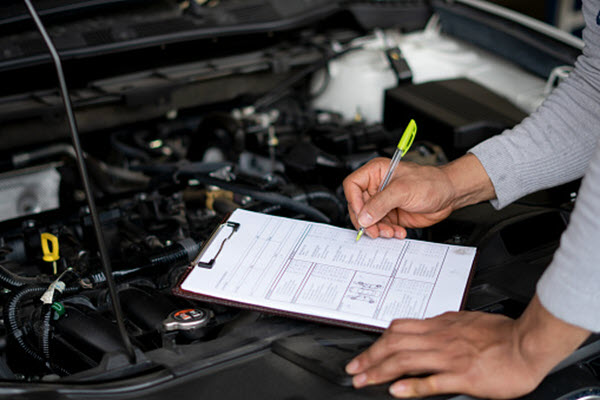How do you fix rust on the bottom of a car?

Metal that has come into contact with oxygen and water will rust. Because an automobile is exposed to the elements, it might rust. Car doors with rust stains are ugly and detract from the car’s value. Car door rust must be removed before it becomes worse or eats through the metal entirely. For a price, the majority of auto body companies can eliminate rust from autos. By doing the rust removal on your automobile yourself, you may save money.
- Eliminate Rust and Painting
To remove worn-out paint and corrosion from the surface that has to be restored, use an angle cutter equipped with a flapper wheel. The same procedure may be done by hand using a wire-brushed tool and coarse Eighty grit sandpaper, but it is considerably more difficult to do the task thoroughly. To get rid of as much dirt, filth, and rust as possible from a region that is out of reach for the grinding device, use a wiring brush. Rust converters are a step beyond paint in that they chemically deactivate rust and leave behind a protective black covering. You might want to consider using one.
- Use fiberglass to repair
A Car floor repair panel made with long-thread fiber glass restoration gel is almost as robust as steel. Combine the hardener and gel. Apply pressure from behind the affected region. Consult the packaging. In under an hour, it may be sanded after it usually begins to solidify, which takes approximately fifteen minutes.
- Surplus fibreglass sand
Sand away any residual glass fiber gel using the angle grinders and flapper wheel. It’s been forced through the corrosion-ridden holes and out. When contrasted to the steel body panel, the hole’s edge should be somewhat recessed. This is so that the finer body filler may be used to fill it.
- Put on physical filler material
Combine the appropriate quantity of hardener with the structure’s filler. Body filler should be applied and pressed into the corrosion holes using a flat, bendable spreader. The less grinding you will need to do afterward, the flatter the filler may be applied. Make sure you use enough filler to prevent low areas, pinholes, and scratches that will require further filler application.
- Sanding it down
A smooth finish is the most crucial and time-consuming aspect of bodywork before you begin painting. Sand off any extra body filler using sandpaper grit four hundred or coarser; if the filler is not nearly firm, it sands more quickly. To avoid having a wavy surface while sanding a broad area, you might require a sanding block. When the entire region has been sanded down to a smooth texture using 400-rating paper, you are finished.
- Scrub that region
To get rid of any last bits of oil or grime from your fingertips, use mineral spirits and a clean cloth to wipe the spot you just fixed. In most locations, the body fillers should be thin enough that paint and metal are visible through them. Once dry, give it another wipe with a pin cloth to get rid of any remaining lint. From this point on, cleaning is essential since every fingerprint, oil smear, or dust particle will result in marks, fisheyes, or streaks in your paint.
- Put priming on
The damaged area, any exposed metal, and a minimum of one inch surrounding it should all be sprayed with primer to facilitate blending. Apply a light application to the entire area and then a little thicker coat a few minutes later for optimal effects. Before sanding, let the primer have the appropriate length of time to dry.
- Repeat with wet sand
Using 400 grit sanding paper damp sand the freshly primed area until it is shiny and the repair’s edges blend in with the initial paint. After cleaning, let it dry, then apply another layer of primer. Switch to sandpaper with a higher quality (600), wet sand, and prime once more. Usually, a couple of coats of priming are sufficient to provide a passably smooth restoration.
- Apply the base coat
Nowadays, a base coat is used on most autos. A top layer of protection is applied to it. However, a lot of touch-up paints may be used without the clear. After priming and repairing the area, apply two or three light coats of paint. One thick coat is preferable to several thin coatings. The goal is to prevent paint from dripping or running.
- Eliminate the paint.
You must use a rubbing or sanding substance by hand to get the complete glossy finish on the spray can paint that has been touched up. If you make any major faults, you will first need to wet sand the area. You should be able to get rid of runs by wet sanding with a thousand and then 2500 grit. If you need to go much coarser, you’ll have to apply an additional layer of paint. You should obtain a complete shine by first softly polishing with rub solution and then moving up to a fine polish compound. Additionally, you may use the rubbing to blend the repaired paint’s new color into the surrounding original color.





